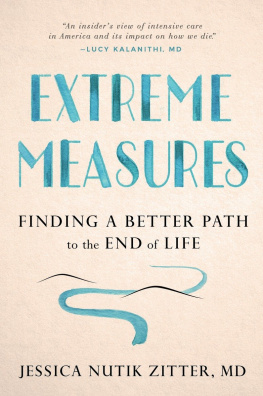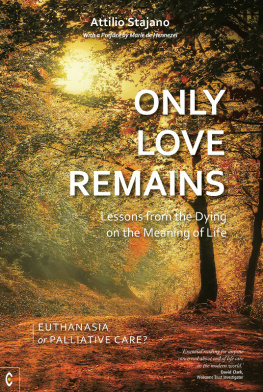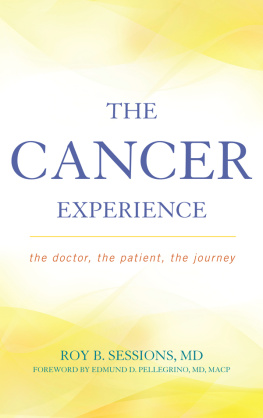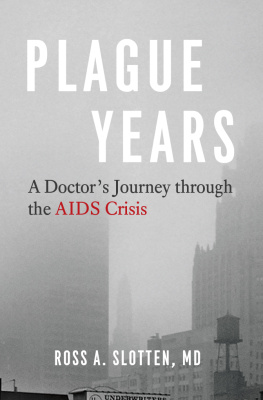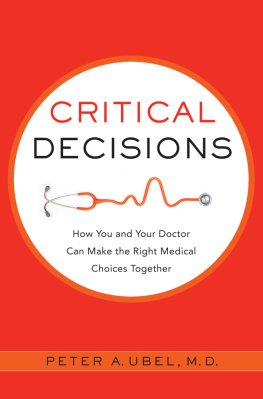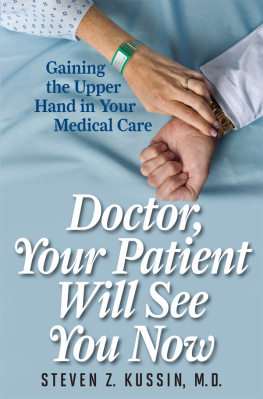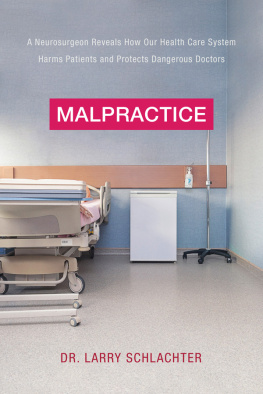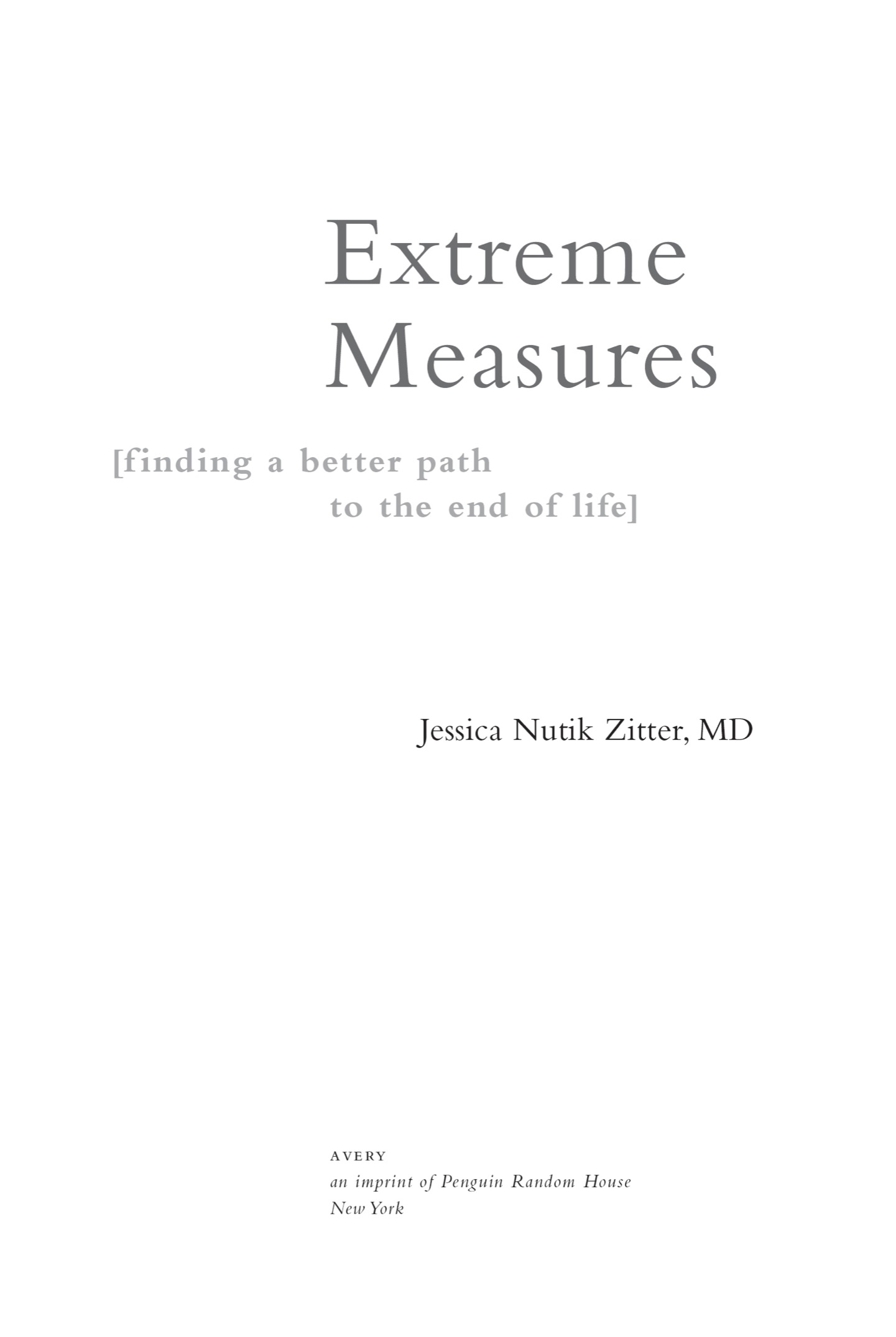In the sufferer let me see only the human being.
The good physician takes care of the patients disease, the great physician takes care of the patient.
In order to protect the privacy of my patients and others, identifying details of certain individuals portrayed in the case studies of this book have been changed. These may include, but are not limited to, names, places, dates, family relations, medical details, and locations of care.
Prefatory Note
I AM AN ACCIDENTAL EVANGELIST . I didnt set out to change the culture of medicine, my chosen and beloved profession. I just found I had no choice but to try.
Over the course of my career, I have worked in at least twenty hospitals. These include some of the best-known academic medical centers in this country, public hospitals in inner cities, Kaiser Foundation hospitals, and several private facilities. The stories that follow derive from these many different locations. I have seen examples of excellent patient-centered care in each of these and, unfortunately, the contrary as well.
My intention here is neither to cast blame nor to point fingers at any physicians or institutions. In this book, the physician who has been the most insensitive, uttered the most wrong words, and missed the most opportunities to do things right is me.
Rather, this book is about how our collective tendency to ignore death, doctor and patient alike, fuels a tremendous amount of suffering. And about how we can move forward from this place. I hope that by being as honest as possible about my own shortcomings as well as my changes in thinking along the way, readers will see that we are in the midst of a paradigm shift. None of us has yet arrived. One of my palliative care colleagues said to me recently, The only reform that comes is from confession.
And so Ive started with myself.
This book is a merging of a few decades of writing and impressions and is not meant to imply that anything is static. My own perspectives have continued to change, as has the culture around me. All for the better. My hope is not to preach but, ultimately, to help us allpatients, families, and health care providersto construct a more humane approach to helping people as they reach the ends of their lives.
Most of the colleagues I have worked with care deeply. They truly want to deliver care that is more comprehensively oriented toward the patient than they were originally taught to do. But we all work within a system that does not yet readily support us in doing that. And so my message carries their sentiments as well. I am speaking for many people. We are all motivated by the intention to serve in the best way we can.
This is not a textbook. Neither is it a comprehensive methodological approach to changing our culture. It is instead powered by my own interpretations and experiencesthe personal reflections of one doctor who is trying to make sense of a very complex and important system that will ultimately affect us all.
[chapter one]
Alone in the Trenches
July 12, 1992
The second week of my medical internship.
2:45 A.M.
A nurse wakes me up. A patients Foley, or bladder catheter has fallen out, and the nurse needs me to put it back in. It is my second week as a medical intern, and her attitude is more like that of a hazing fraternity brother than of a patient advocate. Ive been able to lie down for fifteen minutes in the darkened call room on one of the four cots that already smell of another intern's sleep.
10:30 A.M.
Ive survived my first night on call but can barely function. Ive slept fifteen minutes. The morning hours bear no relief as my pager beeps relentlessly. I make a mental note to answer only every other page and ignore the intervening ones, assuming theyll call back later.
11:45 A.M.
I take the rear stairwell two steps at a time, heading toward my next task on the ninth floor. Mr. A needs to be discharged. That will bring my post-call census down from twenty-one to twenty. I imagine the pen slash I will make as I cross him off my list.
The door slams open above me. Looking up, I see another post-call intern rushing down to attend to something on his list. We grunt at each other. The only thing we need now is a code, he chortles.
We had all witnessed codes as medical students, standing at the back of the room, small and silent so as not to be ejected by a nurse or, worse, pulled into the fray. Uncapped needles strewn over the bed as a surgical resident tried repeatedly to thread a catheter into a large vein. Chest compressions, violent and exhausting, a relay race of residents and nurses taking turns pumping clotted blood through the patient.
Missing a code was frowned on; every doctor within earshot of the hospital PA system was expected to drop work and show up. Ninety percent of us would quickly be dismissed, but most would remain in the hall chatting, glancing periodically into the room to see whether life or death was winning. It was exhilarating. We believed that by merely following the protocols wed studied in medical school, we would be able to bring people back from the dead. Wed resuscitate their lifeless bodies with jolts of electricity and chemical cocktails designed to shock the heart out of its complacency. We could reinflate flaccid lungs by thrusting stiff tubes into airways and sending mechanical puffs of air into them, playing them like musical instruments. Wed practiced the various scenarios dozens of times on dummy mannequins, furnished with software showing us the various heart rhythms changing with every treatment we administered. The result was usually the same. The patients heart rhythm was restored by our efforts. We imagined him waking up from his ordeal, another miracle of modern medicine.

